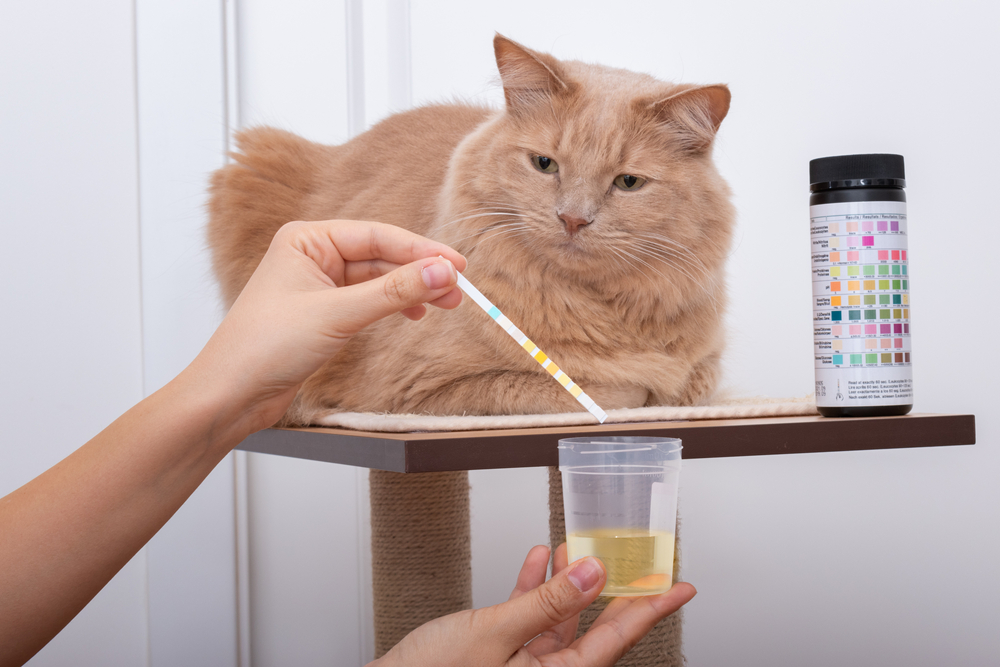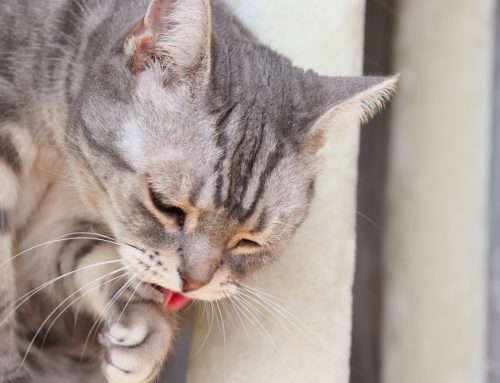Urinary Emergencies in Cats: Signs, Solutions, and When to Act
When your cat spends extra time in the litter box, vocalizes more, acts grumpy, or hides under the bed, it can be tempting to assume it’s a quirk or mood change. In reality, these subtle behaviors can signal one of the most serious feline health emergencies: a urinary blockage.
At Heartland Veterinary Hospital in Danville, Kentucky, we know how frightening it is to see your cat in distress. As an AAHA-accredited hospital, we meet the highest standards of veterinary medicine, ensuring cats receive the urgent care they need when every hour matters.
What Is a Urinary Blockage?
A urinary blockage occurs when the urethra, the tube carrying urine from the bladder out of the body, becomes partially or fully obstructed. This prevents urine from passing and leads to a dangerous buildup of toxins, electrolyte imbalances, and severe pain. Male cats are most at risk because of their narrower urethra, but blockages can occur in any cat with bladder inflammation, stones, or mucus plugs.
Common Causes of Urinary Obstruction in Cats
Feline Idiopathic Cystitis (FIC)
FIC is inflammation of the bladder lining without an infection. Stress is often a trigger, leading to mucus and muscle spasms that block urine flow. Owners can reduce risk by offering hiding spaces, consistent routines, and enrichment activities.
Urinary Stones and Mineral Crystals
Struvite and calcium oxalate crystals can form in concentrated urine. These may clump into stones that obstruct the urethra. Prescription urinary diets and hydration are key preventive tools.
Urethral Plugs and Debris
Inflammatory cells, protein, and blood sometimes combine into soft plugs that block urine. Cats with cystitis or minor bleeding are especially vulnerable. Catheterization and fluid therapy are usually required to restore flow.
Urinary Tract Infections
Less common in cats than dogs, urinary tract infections irritate the bladder and contribute to mucus and debris. Proper testing ensures infections are identified and treated with the right antibiotics.
Recognizing the Signs of Obstruction
Seek veterinary care immediately if your cat shows:
- Straining in the litter box with little or no urine
- Crying out or vocalizing while trying to urinate
- Frequent, unproductive trips to the box
- Vomiting, drooling, or refusing food
- Lethargy, hiding, or sudden weakness
- A swollen, painful abdomen
Even if your cat passes a small amount of urine, a partial blockage can turn complete within hours. When in doubt, call us right away.
Why Urinary Blockage Is an Emergency
A complete obstruction prevents waste removal, causes kidneys to shut down, and raises potassium to fatal levels. Without urgent treatment, cats may experience heart failure or bladder rupture within 24 hours. Because blockages recur in many cats, long-term monitoring and preventive care are just as critical as immediate relief.
Our Diagnostic Process
Physical Exam and Lab Work
On arrival, our veterinarians check hydration, heart rate, and bladder size. In-house laboratory testing provides rapid blood panels and urinalysis to evaluate kidney function, crystals, and infection.
Imaging
Digital radiographs and ultrasound confirm the presence of stones or plugs and guide safe catheter placement. Advanced hospital services ensure these diagnostics are available without delay.
Emergency Treatment Options
Stabilization and Pain Control
Intravenous fluids support kidney function and flush toxins. Analgesics reduce discomfort, while anti-spasmodic medications relax the urethra.
Catheterization and Bladder Flushing
Under sedation, a catheter relieves the obstruction. The bladder is flushed with sterile solution to remove crystals, blood, and debris.
Monitoring After Relief
Cats stay hospitalized for continuous monitoring of urine output, blood pressure, and electrolytes. Repeat lab work confirms kidney recovery before discharge. If needed, we may recommend supportive care such as laser therapy to reduce inflammation. In some cases, multiple days of hospitalization and repeated flushing are necessary before a cat is stable enough to go home.
Surgical Solutions for Recurring Blockages
If medical management fails, a perineal urethrostomy (PU) surgery may be performed to create a wider urinary opening. While it is a major procedure, PU surgery greatly reduces the risk of repeated obstructions. Recovery involves hospitalization, pain management, and careful monitoring for infection. Most cats adapt well and go on to live comfortable lives with a reduced risk of life-threatening blockages, though diet and stress management remain important.
Long-Term Prevention Strategies
Diet and Hydration
Prescription urinary diets dilute urine and balance mineral content. Adding wet food or fountains encourages cats to drink more. Owners should avoid frequent diet changes, which may stress cats and upset urinary balance.
Stress Reduction
Stress is a leading cause of feline urinary issues. Enrichment, hiding spaces, and pheromone diffusers help. Tools like DIY enrichment toys and the Indoor Pet Initiative offer ideas.
Routine Wellness Care
Biannual preventive exams with bloodwork and urinalysis allow early detection of urinary issues before they become life-threatening. For cats with a history of blockages, more frequent rechecks may be recommended.
Litter Box Habits
Clean, spacious, low-entry boxes reduce stress and encourage proper use. The Cat Friendly litter box guide details best practices. For multi-cat households, the rule of thumb is one box per cat, plus one extra.
Emergency Care at Heartland Veterinary Hospital
Emergency services are available for active patients during business hours, and our on-call veterinarian and technician provide telemedicine or in-person support after hours. If our team cannot respond quickly enough, we may direct you to trusted partners such as Bluegrass Veterinary Specialists, MedVet Lexington, or Advanced Animal Care. Always call ahead so we can prepare for your cat’s arrival.
Regular Hours:
- Mon–Fri: 7:30 am – 5:30 pm
- Sat: 8:00 am – 12:00 pm
- Sun: Closed

Why Choose Heartland Veterinary Hospital
From surgical services to laser therapy, our AAHA-accredited hospital combines advanced medicine with compassionate care. We treat every patient as family and believe every owner deserves clear communication and support.
Helping Your Cat Through a Urinary Emergency
Seeing your cat strain or cry in the litter box is frightening, but you are not alone. If you notice any signs of urinary blockage, call Heartland Veterinary Hospital at 859-238-7500 right away. For prevention and peace of mind, schedule a wellness exam to discuss urinary health and long-term care. We are here to provide urgent treatment, ongoing support, and a healthier future for your feline family member.








Leave A Comment